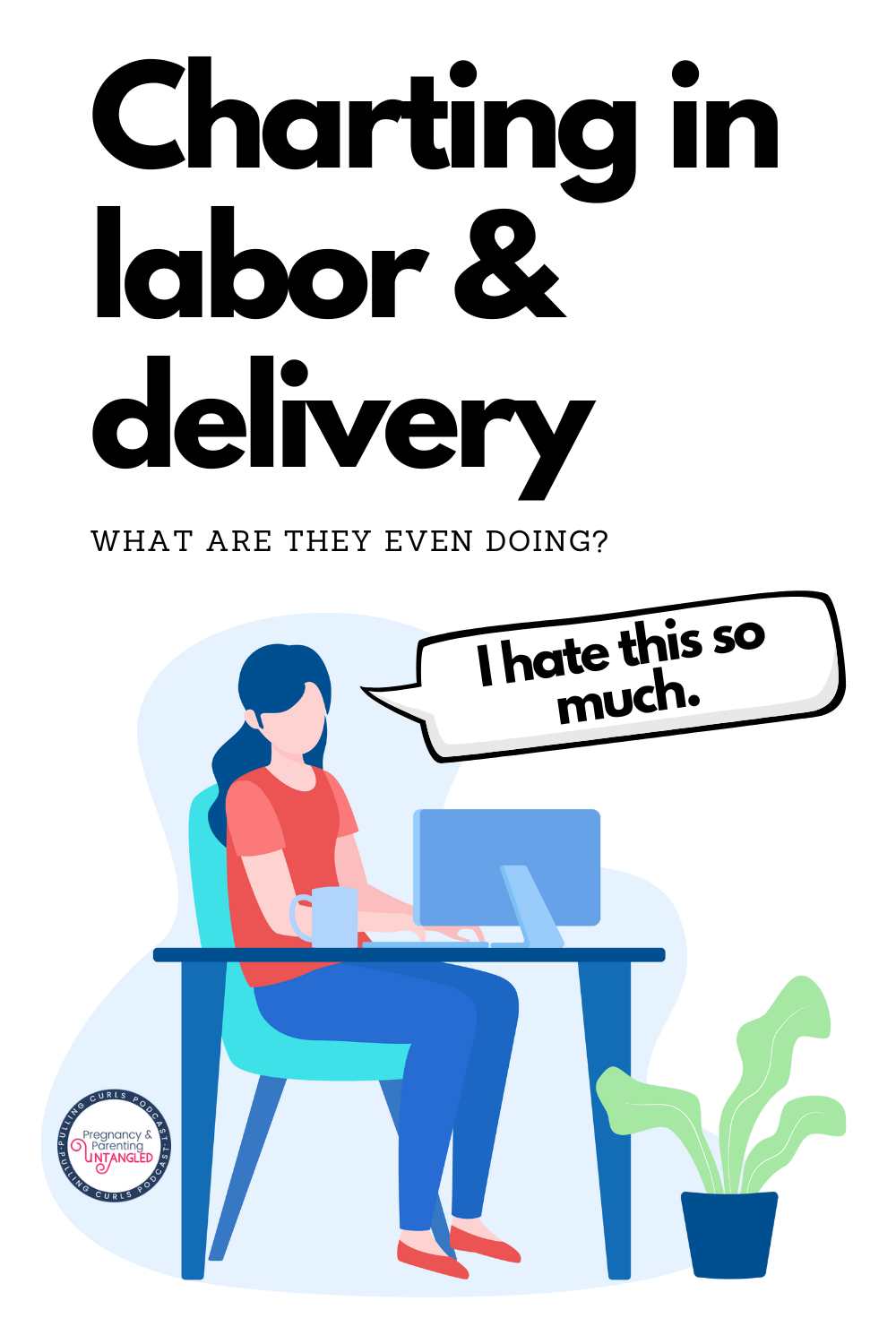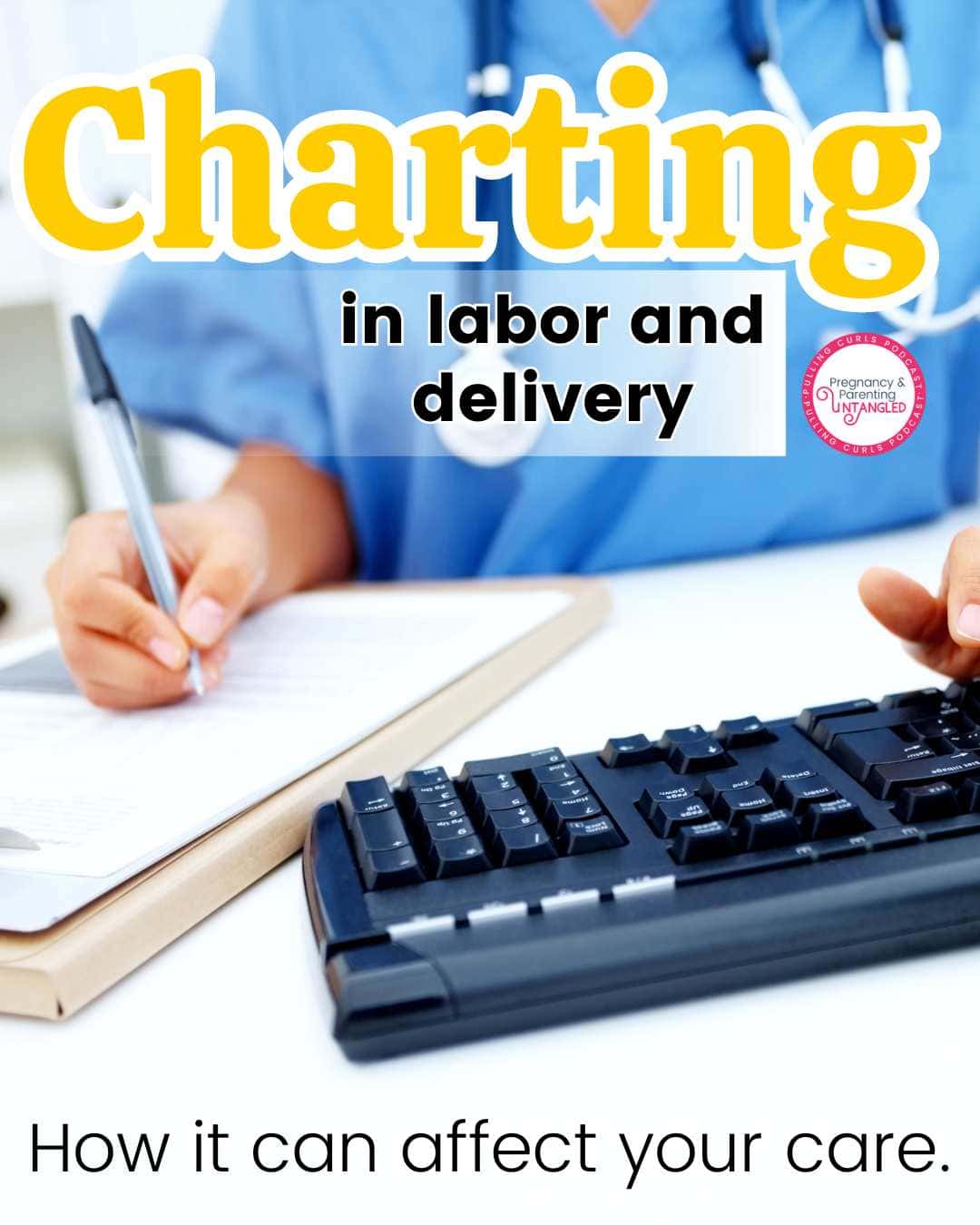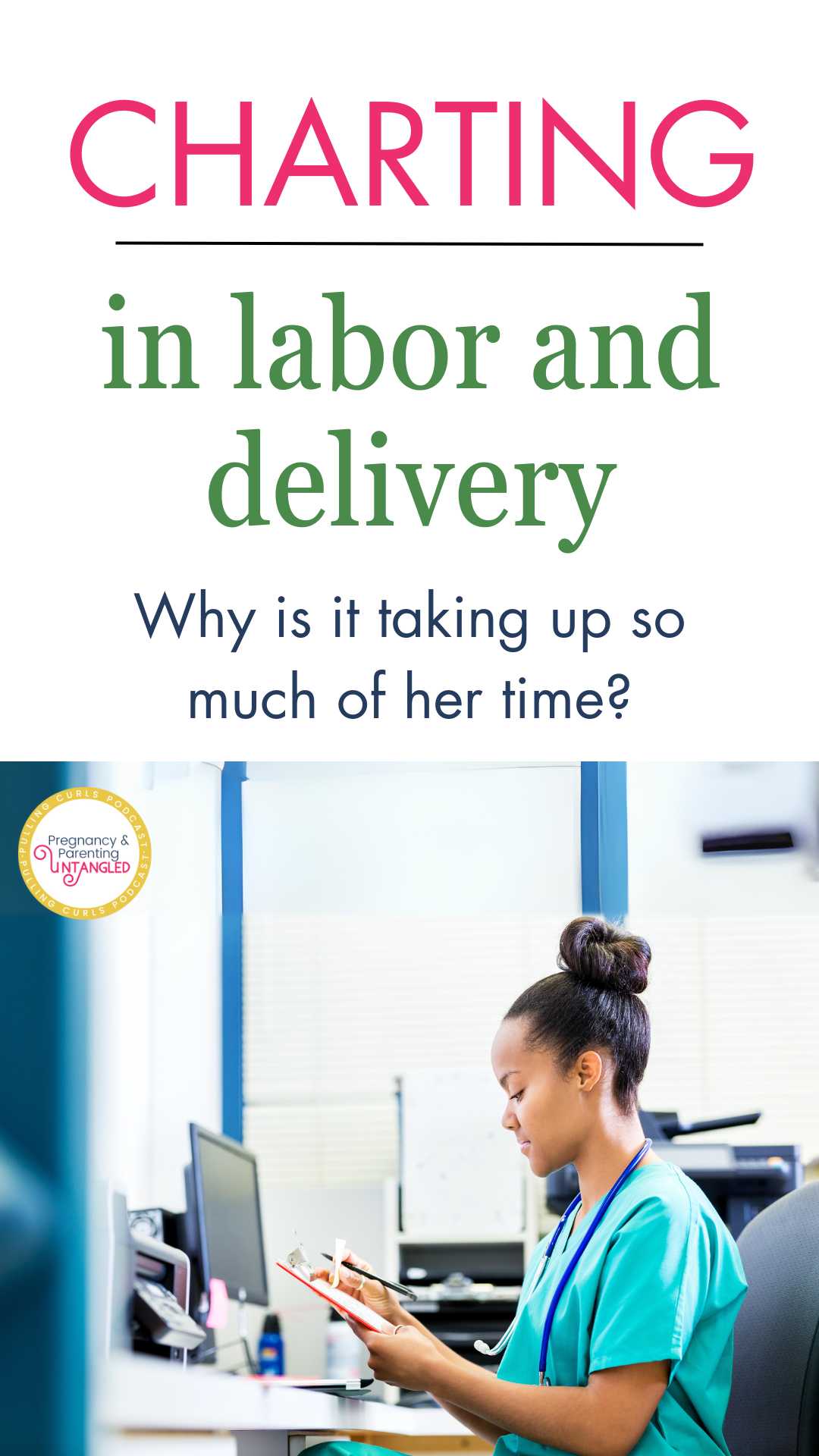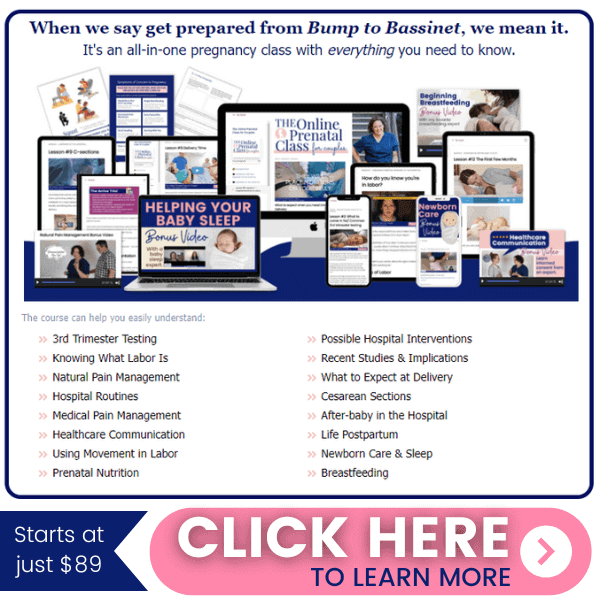In this episode, Hilary untangles the complexity of charting as a nurse in labor and delivery. She sheds light on the legal requirements and the impact on patient care. Stay tuned for practical insights and pro tips on charting in the healthcare setting.
Find it here on Apple or Spotify Podcasts
Big thanks to our sponsor The Online Prenatal Class for Couples — it gives you a good peek behind the nurse’s station and what to expect from your labor nurse.
Timestamps:
00:00 Online prenatal class for couples prepares parents.
04:50 Nurses need to ask about coping with pain
07:33 Anticipating potential problems, doctor gives options.
10:29 Lawyers blame doctors and nurses for problems.
Keypoints:
- The episode discusses the intricacies of charting in labor and delivery, shedding light on the role of nurses and the obligations faced in the medical setting.
- It emphasizes the legal obligations of healthcare providers to meticulously chart patient information and assessments, primarily due to litigation concerns.
- The episode highlights the impact of charting on patient care, revealing that a significant portion of a nurse’s time is spent on charting rather than providing direct care.
- It delves into the frustration experienced by healthcare professionals, especially nurses, in dealing with the extensive charting requirements and the limitations it poses on delivering optimal care.
- The discussion touches upon the annoyance felt by patients from the repetition of assessments and inquiries, acknowledging their perspective in the medical setting.
- It contrasts paper charting with computer charting, noting that while computer charting may automate some aspects, it often necessitates more detailed input and navigation, potentially adding to the workload.
- The episode addresses the legal necessity of providing information to patients about potential risks and complications, highlighting the delicate balance between informing patients and respecting their autonomy in decision-making.
- It underscores the impact of litigation and the stress it places on healthcare providers, particularly in labor and delivery, where unexpected outcomes can lead to costly lawsuits and heightened anxiety.
- The discussion offers insights into the challenges faced in labor and delivery, citing the emotional toll on nurses and the impacts of malpractice insurance on healthcare professionals.
- The host hints at upcoming episodes on topics including Disneyland tips and fascinating facts about the placenta, adding a lighter note after the heavy discussion on charting and litigation in the medical field.
Producer: Drew Erickson
Transcript
[00:00:00.580] – Hilary Erickson
Hey, guys. Welcome back to the Pulling Curls Podcast. Today on episode 222, we are talking about charting as a nurse, so let’s untangle it.
[00:00:10.730] – Hilary Erickson
Hi, I’m Hilary, a serial overcomplicator. I’m also a nurse, mom to Three, and the Curly Head behind Pulling Curls and the pregnancy nurse. This podcast aims to help us stop overcomplicating things and remember how much easier it is to keep things simple. Let’s smooth out those snarls with Pregnancy and Parenting Untangled, The Pulling Curls podcast.
[00:00:38.160] – Hilary Erickson
This episode is sponsored by the Online Prenatal Class for Couples. If you like learning about pregnancy from an expert, from someone who really knows what goes on behind the nurse station, behind the curtain, come into the Online Prenatal Class for Couples. It is the easy way to get prepared for birth.
[00:00:53.260] – Hilary Erickson
Okay, so as a patient, you watch your doctor type all the things into the computer, right? And as a nurse at the hospital, you might see nurses charting things, and you might be wondering, what the heck is going on over there? What are they charting? Are they saying something about me? And today, I want to pull back the curtain a little bit on charting, especially in labor and delivery, which is where I worked, and talk about all the stress that your nurse has about charting.
[00:01:17.550] – Hilary Erickson
First off, in labor and delivery, your nurse is required to chart on the fetal heart rate and the contraction pattern every 15 to 30 minutes, sometimes every hour, but that’s pretty rare. Usually, it’s about every 15 to 30 minutes, which means she is monitoring that fetal heart strip and charting things about it that they learn in all the boatload of classes that your nurses have to take about fetal heart tracing the whole time. There are so many people who are like, You guys don’t understand how poor fetal heart tracing is, because studies show that, especially in early labor, it really doesn’t help outcomes.
[00:01:50.740] – Hilary Erickson
And I will tell you that there is no one more aware about how completely utile fetal heart tracings are, especially in early labor. But we still have to chart on them because the jury, if we ever got pulled into a litigation, would want to see that we were monitoring the fetal heart rate. And the only way that we can do that is by charting on it. And you’re going to see a thread that runs through this is litigation. So I work to labor and delivery. It is one of the most litigious areas in the hospital.
[00:02:20.200] – Hilary Erickson
I think possibly in the world, I get so frustrated when I Google misoprostol inductions, and the first thing that comes up is a law office. It is really frustrating to me because we end up getting blamed for a lot of things which may or may not have happened at birth. And when we get sued, it is for millions and millions of dollars. And everyone’s like, well, just give an informed consent. But I am here to tell you that even an informed consent cannot always prevent you from getting sued by somebody.
[00:02:50.280] – Hilary Erickson
They’re going to be frustrated with the outcome, and they’re going to be looking for somebody to blame that is not themselves, and so you can still get sued. So as labor and delivery providers, we are just real mindful of our charting. In fact, some of the times I would be charting, I would just want to start out my nurse’s note, which is what you write when the boxes that you’re filling in just don’t hit everything. I would be like, Dear members of the jury, as I was at this patient’s bedside, I noticed blah, blah, blah in the fetal heart tones at that time.
[00:03:20.030] – Hilary Erickson
And I would just want to write it to the members of the jury, because honestly, no one else is going to care about this minutiae that I am charting. And I would say as a nurse, over half of my time is spent charting, not providing direct patient care. I’m not helping you out. I 100 % could be a better doula type person if I didn’t need to stay up on the charting.
[00:03:42.430] – Hilary Erickson
And a lot of people will say, well, just wait until baby is delivered. But by then you are so far behind. And honestly, you might not remember what you did. So I’m just telling you the charting decreases good care in labor and delivery. I’m just going to put that out there. You might say, oh, it’s just clicking a lot of boxes. But if you’re having to click all those boxes every 15 minutes for a 12-hour shift. It’s a lot of boxes, and it does stop you from providing better care than you could otherwise. Fun facts. Another thing that I think bothers a lot of people, and this is not just in labor and delivery. I know my dad gets bugged on every time, is that every provider is going to want to do a full assessment on you.
[00:04:18.080] – Hilary Erickson
They may also ask family history. I don’t want to say that we don’t trust the previous provider, but we also just don’t trust the previous provider. We want to make sure that we know where you’re at, that nothing’s being missed. And so we end up doing a full assessment every time. Now, sometimes that’s just quickly checking out your body, your lungs, your heart, your blood pressure. Just make sure things are fine. Some nurses will go more into, Tell me about your last delivery, or stuff like that. Every nurse does it differently. But for me, I wanted to do a full assessment and just gage where people were at, at every shift. And that includes finding out about your pain.
[00:04:50.870] – Hilary Erickson
A lot of times people are like, I didn’t want to be asked about my pain. Well, one of my main jobs is to make sure that you’re coping with the pain of labor well. And so I would need to ask about your pain. I’m not shoving pain medicine in you, but I’m going to say, How are you coping with this? What number would you give it? I know that the number is really stupid. Just give the first one that pops into your head. But it’s really important that I be aware of where you’re at when I’m coming on, because that is actually a part where most mistakes are made, like something slips through the cracks. And so it’s really important for me to do that full assessment right when I first come on, so I can gage where we’re at and where we’re headed during the day. But I do know that it can be super annoying for all those people to ask those same questions over and over again. I totally get that. It’s just part of the fun of medical life.
[00:05:36.400] – Hilary Erickson
Okay, and I started doing paper charting. So when I started in 2001, we had paper charting. We were just down the road from the Apple offices, and we actually paper charted at that hospital for longer than… Most people were computer charting before that hospital was computer charting. And I’ve got to say the paper charting was easier. A lot of people were like, Oh, computer charting has made it easier. And sometimes it does fill in boxes for us, but I think they’re requiring more. There’s more minutia.
[00:06:04.700] – Hilary Erickson
And a lot of times the hospital wants to get these stats where they can just pull it from the computer system. And a lot of that falls on the nurse, asking more questions and getting more things down. Sometimes you just want to chart that a baby had a wet diaper. You have to log in, you have to go to the baby screen, then you have to log into the intake and outtake form. Then you have to click on this, and then you have to… Ten steps later, you’ve charted that the baby had a wet diaper.
[00:06:27.970] – Hilary Erickson
It’s just a lot of logging in, finding the right screen, clicking on the right box, instead of when we could just pull up the paper chart and just mark one. Those are good times. I miss those. Okay, beyond that, I wanted to share some of the legal obligations that nurses, doctors have in the back of their minds. It is our obligation to tell you what things could go wrong. And I think a lot of times when we do that, it makes you think we’re pushing you into something, when in reality, this comes up a lot with a big baby.
[00:06:57.580] – Hilary Erickson
So if your doctor notices that you have a big baby, it is their legal obligation to say, I think you might have a big baby in there. My recommendation is that you might want to get induced because what we’re concerned about is a shoulder dystocia. So a baby gets caught at the outlet of your pelvis, and that can be really traumatic and can have bad consequences.
[00:07:16.490] – Hilary Erickson
It is your doctor’s job to tell you about that. Even though all these people online are like, Doctors shouldn’t be… There’s no reason to have an induction for that. Well, that is up to the mom to decide. It’s not the doctor deciding that you have a big baby that you need to be induced. But it is their job to say, Hey, I’m looking down the road and I’m seeing that this could be a problem. One of the ways to divert from that problem is by having an early induction if you would like to. Or we can go the full way and not have an induction, or we could wait and have the induction a little bit later. Or we could check your cervix and see how ready you are for labor.
[00:07:48.910] – Hilary Erickson
But their job is to tell you, Baby looks a little bit big to me. Because if they were to go to court, later on down the line, the jury is going to want to see that the doctor said, Yes, this baby looks a little bit big to me. What they don’t want to see is the doctor writes down the measurements. They’re bigger than they should be, and the doctor says nothing. So the doctor has to say what they could see as a problem down the road so that you can make that choice with the information that he has to give you, if that makes sense.
[00:08:15.810] – Hilary Erickson
So that’s one of the things why we offer things like that. And then you may feel pushed into doing them when in reality it’s just an offer, and then you get to make up your own choice. I have a whole podcast on making the choice for an induction where I talk with a doctor who… Let’s say we see high blood pressures. Let’s say we see your labs are trending maybe preeclampsia, and they’re going to come to you and say, Hey, looks like you might be starting some preeclampsia here. One way to end that is by getting the placenta out and having this baby, or we could watch it for a little bit.
[00:08:46.540] – Hilary Erickson
And then you’re going to make the choice, Okay, what do I want to do at this point? And all of that is wound up in our charting, right? Because then the doctor is going to say, Discuss large fetal size with patient, patient Just possible induction, patient declined induction after informed consent, something like that.
[00:09:05.790] – Hilary Erickson
Let me tell you how much fun it is to write charting for stuff like this. I just want to say that I personally believe the bad people in the labor space are the lawyers, because I rarely see the cases where I think we can get our butt sued on that one. They rarely come for that, right? It is the minutia of small things that somehow apparent missions are just talk to a lawyer, I don’t know how they find them, that then they come back and they sue us big time for small things that really weren’t any of our issue, right? Stuff is going to happen during labor. It’s not all their fault. And so there are these lawyers that prey on people who have outcomes that they didn’t expect that then want to sue us for millions and millions of dollars.
[00:09:55.940] – Hilary Erickson
And that can be difficult. And it’s why a lot of OB/GYNs because the malpractice insurance is high. And honestly, the anxiety of all of it is quite high as well. The idea that you could be sued for something that you did or did not mean to do is really hard in labor and delivery.
[00:10:12.270] – Hilary Erickson
And when there is a lawsuit in a labor and delivery unit, it is difficult for the entire unit. We all see those nurses who get pulled onto the stand. We all cry with them when they come back and say that it was absolutely terrifying and horrifying, and they feel like they’re a horrible nurse, even though they did all the things that they should have done, right?
[00:10:30.210] – Hilary Erickson
So the lawyers are not doing us any favors, and I don’t feel like that gets talked about very much online. They seem to think that the nurses and the doctors and labor and delivery is the issue, when in reality, people suing for huge amounts of money for things that we really didn’t foresee or couldn’t have fixed weren’t really our fault is a lot of the problem. That’s just a little soapbox of mine. You’re welcome.
[00:10:53.990] – Hilary Erickson
And I just have to remind you that there are a lot of things that we do in labor and delivery, charting on fetal heart rates, that we do just because of the legalities of it. I do believe that fetal heart rate, especially at the end, can be a great indicator of baby’s well-being for us.
[00:11:08.710] – Hilary Erickson
And it’s so important when you’re getting an induction and things like that. But a lot of times, especially early in labor, just not much is going on. And sometimes we start interventions for something that would happen for anybody. I think if you monitored any mom long term, she’s going to have some D-cells. That’s normal. But if we see it while we’re in the hospital, we have to react to it because if we were to get sued for it, we have to down the line, well, we saw this variable and we decided to act. And sometimes that cascade of interventions happens because of that continuous fetal heart rate monitoring. And I 100 % agree with that. And it is the lawyer’s fault, not our fault. Just my thoughts.
[00:11:44.340] – Hilary Erickson
Anyway, Hopefully this gives you some ideas about charting. Once again, that nurse is just pounding in all the information that the hospital needs. It is super important. Nurses are very trained and required on how to chart. We talk about a lot, and it does take up way too much time of our patient care time. And I would love to see that change, although it doesn’t look like it’s happening anytime soon. Those are the pro tips on charting.
Stay tuned. Next week, we are talking about my best Disneyland tips. This is a Yeah. Charting is one of my least favorite things in the world, and Disneyland is one of my favorite things in the world. I know spring break’s coming up, so I have one of my favorite Disneyland aficionados coming on to chat about that. And then the week after that, we are talking about the placenta and some amazing facts about placenta. So stay tuned.
Thanks for joining us on the Pulling Curls podcast today. If you like today’s episode, please consider reviewing, sharing, subscribing. It really helps our podcast grow. Thank you.
Keywords:
charting, nurse, labor and delivery, fetal heart rate monitoring, litigation, legal obligations, medical care, prenatal class, online prenatal class, labor and delivery providers, patient care, childbirth, hospital charting, computer charting, paper charting, malpractice insurance, malpractice lawsuit, medical litigation, informed consent, induction, preeclampsia, big baby, shoulder dystocia, assessment, pain management, medical assessments, maternal health, electronic medical records, Disneyland, placenta facts








Leave a Reply